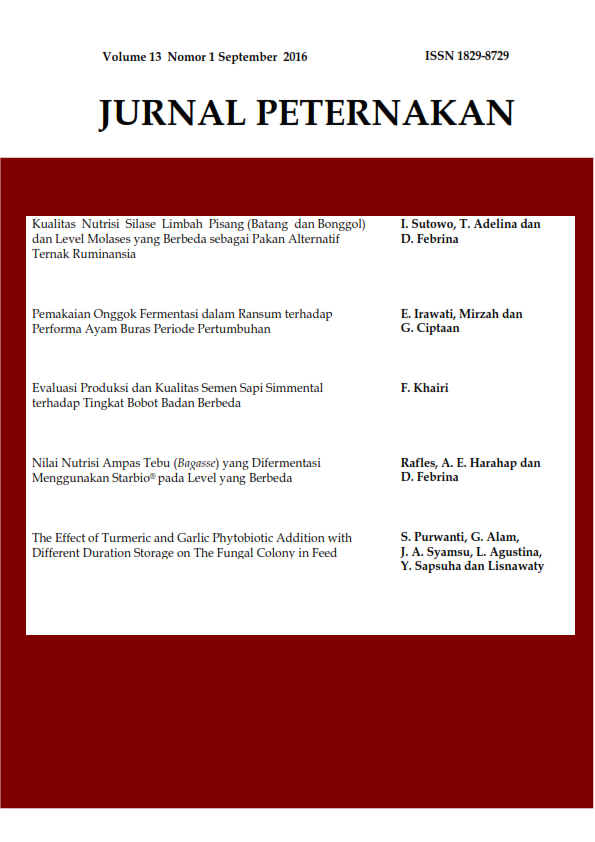EVALUASI PRODUKSI DAN KUALITAS SEMEN SAPI SIMMENTAL TERHADAP TINGKAT BOBOT BADAN BERBEDA
DOI:
https://doi.org/10.24014/jupet.v13i2.2419Keywords:
body weight, semen volume, motility, concentrationAbstract
This study was conducted to find the rate of body weight ideal study Simental cows to produce production and the best quality fresh semen. The material used in this study were 9 males Simental cows were divided into 3 ranges of body weight as a treatment that is P1 = low body weight (822-878 kg), P2 = moderate weight (910-958 kg) and P3 = body weight high (983-1041 kg). The number of cows in each group of body weight is considered as replicates. The method used was a survey method. The research is designed to completely randomized design (CRD) with 3 treatments and weight range 3 replications. Each stud cows housed cement 2 times per week for 12 weeks so that each cow cement accommodated as many as 24 times. Parameters observed in this study is that the volume of fresh cement production of cement per shelter and semen quality bulls include sperm motility and concentration of spermatozoa. Data were analyzed using analysis of variance, followed by Duncan test if there are significant levels of different body weights. The results showed that differences in body weight bulls simental not significant (P>0.05) for fresh semen volume, sperm motility and concentration of spermatozoa. Mean semen volume is best found in the high body weight group, whereas sperm motility and concentration of spermatozoa present in body weight groups were.
Downloads
Published
Issue
Section
License
The Authors submitting a manuscript do so on the understanding that if accepted for publication, copyright of the article shall be assigned to Jurnal Peternakan and published by Fakultas Pertanian dan Peternakan Universitas Islam Negeri Sultan Syarif Kasim Riau as publisher of the journal.
Authors who publish with this journal agree to the following terms:
Authors automatically transfer the copyright to the journal and grant the journal right of first publication with the work simultaneously licensed under a Creative Commons (CC BY) that allows others to share the work with an acknowledgement of the work's authorship and initial publication in this journal.
Authors are able to enter into separate permission for non-exclusive distribution of the journal's published version of the work (e.g., post it to an institutional repository or publish it in a book), with an acknowledgement of its initial publication in this journal.
Authors are permitted and encouraged to post their work online (e.g., in institutional repositories or on their website) prior to and during the submission process, as it can lead to productive exchanges, as well as earlier and greater citation of published work (See The Effect of Open Access).

